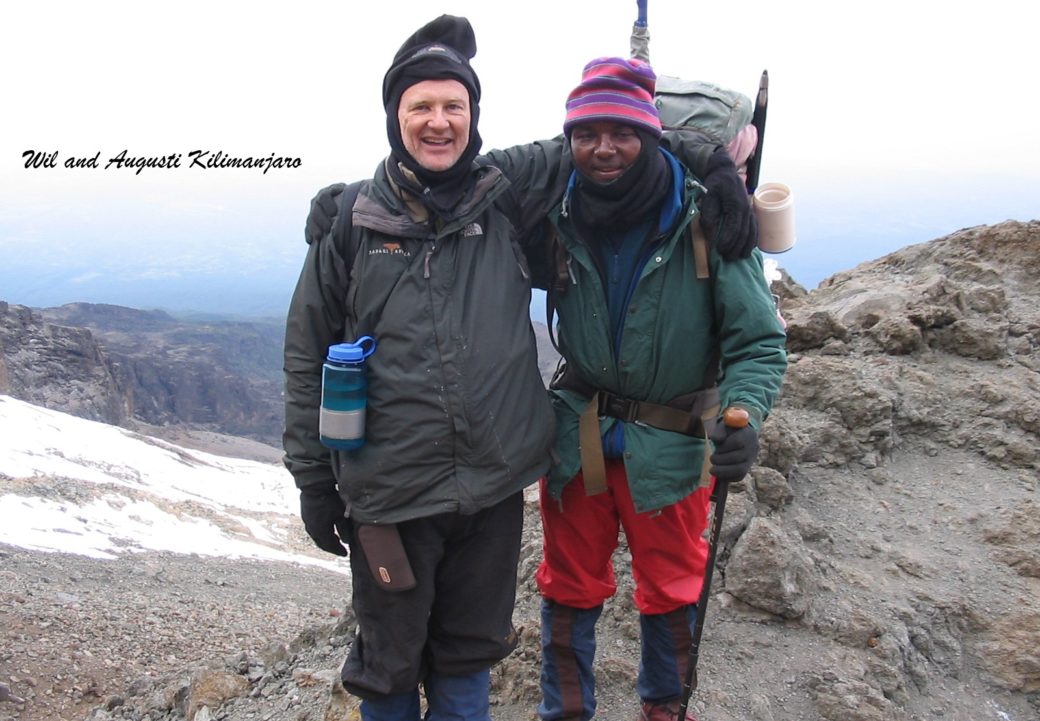Kilimanjaro: Why You Should Take the Northern Route
Join Us: July 4th 2023 Full Moon Summit

Join Us: July 4th 2023 Full Moon Summit

Wil Smith, co-founder of Deeper Africa and Director of Deeper Adventures.
Look at a route map of Kilimanjaro and you see that most routes shoot up and around the South face. That puts a lot of people on one side of the mountain and very few on the other. I strongly recommend you take the Northern Circuit Route. Kilimanjaro takes time, money and phenomenal amounts of energy. Summiting Kilimanjaro is not easy. Every year many try to climb it and fail. At the same time, most people will have but one chance to make it with no second chance. So if you are taking the trouble , why not take the road less traveled and give yourself the best odds and the best experience.

Kilimanjaro N. Route
When people hear that Kilimanjaro’s Northern Approach is the least traveled, they might assume it is somehow inferior or harder. Ironically, the least traveled route is by far the best path up the mountain. There are three reasons why the best route is the less traveled route: It is less well known, it takes more time, and it is not the cheapest way. Having trekked Kilimanjaro on all the major routes, and in all seasons, I am here to testify that the Northern approach is worth the extra time and money. Here’s why:

Ammy Nnko - N. Circuit Success Story
The view matters. That's especially true on a multiday trek. A good view keeps your spirits up. On the North Side vistas are unimpeded. Below your trail are vast plains stretching out across Kenya, including Amboseli National park where those iconic photos are taken of elephants with snow-capped Kili in the background. Uphill and to your right, the sun blazes off the ice towers of the northern glaciers. This is the Southern Hemisphere, so the north side is the sunny side, making for warmer, cheerier, hiking days. That's not to say the North Side isn't beautiful too, but it's more crowded. In some seasons the South is more wet and foggy.
Some people are fine with crowds and others not. But regardless of your score on the introversion-extroversion scale, with fewer people the Northern Route, a more natural wilderness feel and is quieter. Quiet matters when you need adequate sleep to keep your energy up. On the North Side, there tends to be plenty of room in the camps and if you want some privacy you can find it.
It's a long way from Kilimanjaro to the Serengeti and the majority of Kilimanjaro trekkers never get to see a lion, elephant, or giraffe. But the Northern Route starts near the Enduimet Wildlife Management Area, a great place for a quick safari to see some of the biggest tuskers in Africa. Or you can go big with Amboseli National just across the border in Kenya. Amboseli has those clear views of snowy Kilimanjaro w often published as photos of elephants with Kilimanjaro in the background. The Northern Route is easily accessible from Amboseli. You simply cross the border at Oloitokitok and drive a short distance west toward the trailhead at Londorossi gate.
The continued growth of travel and tourism has many good outcomes. Increased visitation to natural areas puts money in the pockets of local populations, it lends dollars to support conservation efforts, and the more wild spaces are appreciated the more likely they will be preserved. There are communities that benefit from the less traveled Northern Route, so going this route supports jobs and businesses in an area where it is needed most.
On the northern route you climb patiently and take more time. The route is such that your uphill pushes are alternated with downhill breathers. With less intense exertion and better acclimatization, you feel better, you are stronger, and the experience is memorable and enjoyable.
You do not need to be super fit to trek Kilimanjaro. If you are fit enough to go on an all day hike, you are already fit enough to climb Kilimanjaro. There is no need for running, marathoning, weightlifting, etc. Although these activities may help, and probably won’t hurt. Walking is the way to top Kilimanjaro and likewise vigorous and regular walking is a great way to train. As is often the case, when climbing Kilimanjaro, your mind is your strongest muscle.
The final push to the summit from School hut, starts just after midnight. Next July we have the full moon aloft on July 4th Independence day--so we are celebrating with a special Independence Day Summit. Then in August we have climb timed to the dark of the moon when the skies are ablaze with stars. For the 2024 season we are scheduling full moon ascents during the peak weather seasons: January and February plus June through October.